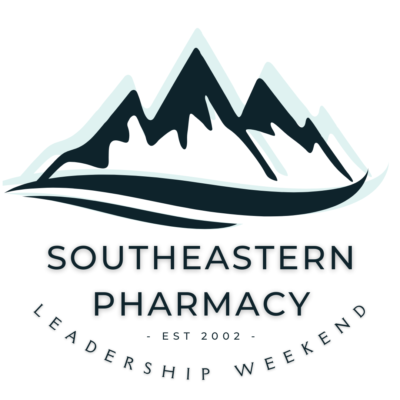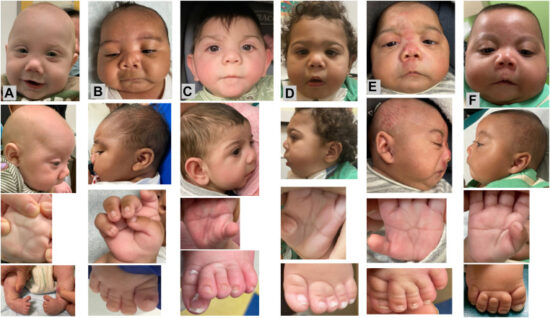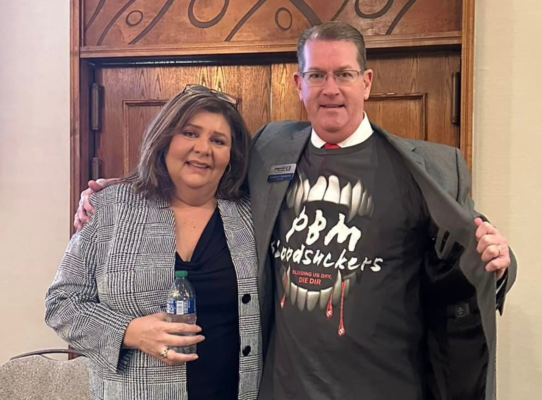November 10, 2023 ✒ Andrew Kantor
Employer health plans are paying more and more for weight loss drugs — about $324 per insured member this year, regardless of whether they take the drugs. In other words, employers are going to be paying a lot more for health coverage going forward because of GLP-1 inhibitors and other expensive drugs. In fact… [A]verage costs for U.S. employers that pay for their employee health costs are projected to rise 8.5 percent to more than $15,000 per employee in 2024 with a full one percentage point of the total cost, or $150, due to GLP-1 drug spending growth. Here’s an unexpected side effect of oral contraceptives. According to Canadian researchers, they seem to reduce the part of women’s brains that regulates fear — the ventromedial prefrontal cortex. “There is still much to learn when it comes to women’s brains and how they are impacted by [oral contraceptive] use.” Not only are most drugs not tested on obese people, in some cases those people are specifically ruled out. Considering that something like 40% of Americans are obese, that’s a problem. Some drugs work differently in people who are obese, and … … Research suggests that may include antibiotics and antifungal drugs used to treat serious infections, synthetic hormones used in Plan B emergency contraception and even ibuprofen. We know how problems in the supply chain are causing drug shortages, but for the first time there’s another side — literally. High demand is straining the system, causing shortages (and it’s not just weight loss drugs). The good-ish side is that there’s a solution to dealing with potential demand spikes: requiring manufacturers to keep a rolling stockpile of drugs … although you never know which ones will see a sudden surge. Michael Ganio at the American Society of Health-System Pharmacists “noted an article about minoxidil, the active ingredient in Rogaine, in the New York Times last year. There was an immediate jump in prescribing for the once-obscure drug following the story.” We’re just about out of antibiotics to treat gonorrhea, but there’s good news on the horizon. A new drug, zoliflodacin, just passed its phase 3 trial — a trial that compared it with ceftriaxone, the current last-line treatment for gonorrhea. It worked just as well, it was safe and well tolerated, and most importantly, zoliflodacin works against ceftriaxone-resistant strains of N. gonorrhoeae. The downsides: Although this is the first new treatment for gonorrhea in decades, it simply becomes the newest last-line drug. And the developers have already found that gonorrhea can develop resistance to it. But: Zoliflodacin is a first-in-class drug, so there’s always the potential for more to come. If you give your pre-teen a Coke, you’re probably going to have to start hiding the vodka. That’s the finding of Korean psychologists who studied the drinking habits of more than 2,000 American kids: “Nine-to-10-year-olds who drink caffeinated soda daily are twice as likely to try alcohol within a year.” [T]he results of the study also demonstrate that daily drinkers of caffeinated soda were more impulsive and have a poorer working memory. Caveat: It might be that kids with poor impulse control are more likely to try both caffeine and alcohol. Either way, if you see a 10-year-old with a Diet Dr Pepper, you can make some educated guesses about his future. There are plenty of people who aren’t happy with how marijuana legalization is spreading. Marijuana users apparently are pretty good at empathizing with them. Brain imaging indicates enhanced connectivity in the anterior cingulate cortex, a region related to empathy, among cannabis users. Snark aside, this could be a useful finding for treating people with “deficits in social interactions, such as sociopathy, social anxiety, and avoidant personality disorder, among others.”Brain changes from contraceptives, pre-teen gateway drug, the cost of weight loss, and more
Paying for weight loss
Short takes
Contraceptives and fear
Expanding drug tests
Drug shortages’ flip side
Gonorrhea killer
Unexpected gateway drug
I feel your pain, my dude
November 09, 2023 ✒ Andrew Kantor
Apparently you can get more-accurate blood pressure readings when patients stand up. The reason is simple, suggest University of Texas researchers: Diagnosing hypertension means knowing what someone’s BP is during normal activity, so just testing while a patient is sittting “has limited sensitivity and reliability as it does not reflect blood pressure in real living situations where we often stand or walk.” In a nutshell: Testing while seated detected hypertension 43% of the time, while testing while standing detected it 71% of the time. (They compared the results to 24‐hour ambulatory blood pressure monitoring to decide on accuracy.) Eli Lilly received approval for its tirzepatide drug to treat obesity. Called “Zepbound,” it’s essentially a higher dosage of the company’s diabetes drug Mounjaro, which is already being used off-label for obesity. With the FDA nod, Lilly now has its answer to Novo’s blockbuster duo of Ozempic for diabetes, and Wegovy for obesity. Pricing hasn’t been announced, but you can guess it won’t be cheap. Mark your calendars … no, even better, register now for the 2024 Southeastern Pharmacy Leadership Weekend, January 12-14 at the Omni Grove Park Inn in Asheville, North Carolina. And yes, this used to be the “Girls of Pharmacy Leadership Weekend, then the “Women of Pharmacy Leadership Weekend,” and now it’s expanded to include any and all genders. It’s got some great speakers lined up and, of course, “plenty of time for spa appointments.” GPhA members get a $100 discount: It’s just $379 for the weekend if you register by December 1, or $479 after that. Use discount code GAMEMBER24. Full registration includes participation in all events, event materials, Friday night networking reception, and dinner and two breakfasts. It does not include the hotel, which is $239 per night plus a $20 resort fee. Space in the room block is limited. Click here for all the details. This doesn’t sound good at all: “In a world first, scientists have observed one virus latching onto another.” Extra creepy: The little purple dude is called a “satellite virus,” and it can’t infect a host cell without the assistance of a “helper virus.” And apparently it’s learned how to hitch a ride on one. Ketamine can treat PTSD and depression. That’s pretty much been confirmed, and a review of six trials confirmed the confirmations. But there are questions. It works fast: “Patients receiving ketamine saw their PTSD symptoms reduced by about 25% both at one day and one week after therapy.” Then things get cloudy. It’s great that ketamine works so fast, but how to keep those benefits coming isn’t clear. (Hence “cloudy.”) Continued injections over a month only helped a bit, leading to the review author to say… The big unknown with using ketamine for PTSD and depressive symptoms is how often the injections are needed. The data simply is not robust enough to determine whether multiple doses maintain the effects better than simply using a single dose. Ketamine is in that spot between “we know it does good” and “but we don’t have all the answers,” so shady clinics are all over it. They’re (falsely) advertising benefits for the drug, including lying about its FDA approval status. Even the preliminary survey by University of Colorado and Johns Hopkins researchers suggests that there are something like 800 clinics doing this across the country. “There is a big market opportunity for clinics advertising a quick fix. Because ketamine is being used off-label and it’s not really in mainstream psychiatry right now, that’s an environment where you can have these fringe clinics proliferate.” Duke researchers have created a light-activated “molecular warhead” that annihilates the bacterium that causes Lyme disease. “This transport mechanism gets internalized in the bacterium and brings in a molecule that causes what we’ve described as a berserker reaction — a programmed death response. It wipes out the bacteria — sterilizes the culture with a single dose of light.” (The obvious question: How would that work in the real world, considering that few people have lights inside their bodies?) Ohio on Tuesday became the 24th state to legalize recreational marijuana. The state plans to cash in, with a 10% sales tax “to be spent on administrative costs, addiction treatment, municipalities with dispensaries, and social equity and jobs programs supporting the industry itself.” (The law can actually be changed by the legislature, but that has some serious political risks.)Shredding Lyme bacteria, take your BP while standing, shady ketamine clinics, and more
Stand for your BP
Lilly joins weight-loss game
Ladies and gentlemen, come to Asheville

Viruses are pairing up

Ketamine in the news
What it (probably) can do
What it can’t
Lyme bacteria berserker
Elsewhere: And then there were 24
November 08, 2023 ✒ Andrew Kantor
Adding to the semaglutide shortage are psychiatrists, who are prescribing the new weight loss drugs for patients who are gaining weight because of antidepressants and antipsychotics. Well, not all. Half are iffy because they don’t know how GLP-1 inhibitors might interact with other drugs: “There’s next to no data” on people with depression, bipolar disorder or other mental illnesses taking semaglutide […] and until there’s more evidence, “you’re sort of flying blind.” Meanwhile others are hoping Ozempic and kin will help patients overcome their hesitation to treat their mental health. Regardless, the shortage continues. Using medical marijuana, say a pair of new studies, is associated with a higher risk of heart attack or stroke in older patients. One study found that cannabis use among older patients increases the risk of heart attack or stroke by 20%. The second study found that using cannabis increased the risk of heart failure by 34%. But — and it’s a big but — it’s entirely unclear whether it’s the marijuana that’s causing the increase, or if the folks using it are simply more prone to heart issues. As one researcher put it, “My presumption is it’s the association with other unhealthy behaviors rather than cannabis use per se that is driving the association.” Until the actual cause is determined, file this under “Keep an eye out.” “Hearing bad grammar results in physical signs of stress” — British study It’s possible (as you probably know) to transplant pancreatic islet cells into diabetes patients so their bodies can produce insulin. The downsides are a shortage of donors and the recipient needing anti-rejection drugs for life. Canadian researchers, though, have a better idea: Build some of the patients’ own cells to do the job. They took pancreas-based stem cells, put them in the W.A.B.A.C. machine (to “chemically wind them back in time”), did some more science, and turned 90% of them into insulin-producing cells — and they belong to the patients, so no rejection issues. Regardless of whether the cells belonged to a patient with type 1 or type 2 diabetes, or someone who has surgical diabetes due to removal of the pancreas, all the cells were able to reverse diabetes. Obviously this is in the lab at this point, but as the lead researcher pointed out, “What we’re trying to do here is peer over the horizon and try to imagine what diabetes care is going to look like 15, 20, 30 years from now.” It’s no shock that pharmacists aren’t used enough in the healthcare system, but now Virginia Commonwealth University researchers gave their slide rules a workout and calculated just how much a difference they could make. [P]harmacists who are given more leeway to help patients living with hypertension could prevent more than 15 million heart attacks, roughly 8 million strokes, and more than 4 million cases each of angina and heart failure and save $1.1 trillion over 30 years, or more than $10,100 per patient. That’s just for hypertension! And it’s without a wholesale change in their roles — just “offering advice on health and wellness, helping patients adhere to their medication regimen, and assisting in prescribing certain medications.” So what’s the barrier? Pharmacists aren’t recognized as providers under the Social Security Act. Over-the-counter hearing aids have been available for a year, but uptake has been slow. That’s too bad, because loss of hearing is a serious risk factor for dementia. The problem is that the people who need them are the people most confused by the marketing jargon.What pharmacists are worth, stress from words, rebuilding pancreas cells, and more
Psychiatrists and Ozempic
Causation or correlation?
Me and my friends believe this is true
Home-grown diabetes treatment
Pharmacist value quantified
The Long Read: The Need to Hear edition
Captain Obvious always leaves a big tip
November 07, 2023 ✒ Andrew Kantor
Hormone replacement therapy, often taken by women who are experiencing the downsides of post-menopausal hormone change, has another effect: It seem to protect against dementia. The important kicker, though, is that to get the most of that benefit it needs to be started early, according to a new study out of Weill Cornell Medicine. And by “early” they mean as soon as menopausal symptoms start, i.e., in perimenopause. If that happens — if she starts taking them early and keeps going for 10 or more years — “there was a 26% reduced risk of dementia.” Quoth the lead researcher: “[I]n the right woman, at the right dose, and for the right duration of time, I believe that hormone replacement therapy can be one of our most powerful tools to reduce a woman’s risk for cognitive decline.” Side note: What’s the difference between hormone therapy and hormone replacement therapy? Find a nice explanation right here. Grr. We made a stupid mistake in Saturday’s edition, referring to osteoarthritis instead of osteoporosis. Despite a lot of work, we can’t even come up with a decent excuse. New guidelines from the American Cancer Society suggest that more smokers and former smokers be screened for lung cancer, and that screening begin earlier. The change from the ACS’s 2013 guidelines now say that anyone with a “≥20 pack-year smoking history” — i.e., about a pack a day — should consider an annual low-dose CT scan starting at age 50 instead of 55. It doesn’t matter how long it’s been since they quit, either. The new recommendation would mean about 5 million additional Americans should get those scans. The last chance to get your GPhA immunization certificate is coming up! In other words, you really want to sign up for GPhA’s Immunization Delivery Training for Pharmacy Technicians. In short, having this certificate on your résumé will help you stand out from your peers when it comes to looking your boss in the eye. (No offense, peers.) It’ll also help you sit for PTCB’s Advanced Skill Exam. Help your career and maybe your bank account. Check out GPhA’s Immunization Delivery Training for Pharmacy Technicians — the live portion is Sunday, December 3. Not happy with how private industry has responded to nationwide drug shortages, two high-ranking GOP representatives want answers from the FDA about why the government hasn’t done more. They want the FDA to make it easier for domestic companies to get generic drugs into production, and they want the agency to find a way reduce America’s reliance on foreign-made medicine. (It’s not clear how reducing overseas drug imports would help alleviate the shortages.) The problem, as FDA Commissioner Robert Califf pointed out, is that there’s little incentive for domestic manufacturing of generic drugs. “[W]e essentially have two drug industries in the US,” he said in August. He cited an “innovator industry” of branded drugs where “the prices are too high,” and the generics industry, where “a lot of the prices are too low.” And there’s little the FDA can do. As the director of the its Oncology Center of Excellence pointed out, the agency can’t require a company to manufacture a drug or even report spikes in demand. And, of course, even streamlining the approval process won’t help if there’s not enough incentive for a domestic company to make the drug. The CDC is going to be testing incoming travelers at four major airports*, looking for respiratory viruses. It won’t stop people from entering the country, but it’s going to help the agency get a better handle on how Covid, the flu, and RSV are spreading and on any new variants beginning to spread. (It’s entirely voluntary.) * JFK, SFO, Boston’s Logan, and Washington’s Dulles airports People over 60 who consume 6-(Methylsulfinyl)hexyl isothiocyanate seem to have improved cognitive function. How do you get 6-MSITC? From wasabi. The study out of Japan’s Tohoku University was a small one — 72 people aged 60+ over 12 weeks. Interestingly, the ‘wasabi’ group was given tablets, so they didn’t get to enjoy the full effect of 100 mg of wasabi*. Still… At the end of the experiment, those who had ingested wasabi tablets showed significantly better performance in their episodic memory (recalling events from the past) and working memory (holding information temporarily) based on a series of cognitive tests. * About 1/16th of a teaspoon or 1.25 Wilhelm screams Wasabi for your brain, start those hormones early, ex-smokers need cancer screening, and more
Start hormone replacement early
Correction
Former smokers need cancer screening
Attention, pharmacy techs!
Where’s the government when you need it?
Virus-checking arrivals
Spicy brain boost

November 04, 2023 ✒ Andrew Kantor
Aussie researchers say they’ve found a way to reverse osteoporosis. You might think of it as a “wear and tear” condition, they say, but that doesn’t account for 21st century medicine. What they found was a type of stem cell (called Gremlin 1 cells) in joint cartilage that — when there are enough of them — will lead to “significant recovery of cartilage thickness and reduced osteoarthritis.” So the Aussies treated those cells with a growth factor (FGF18, or Sprifermin to its friends) and got them back in action, leading to repaired cartilage … and the end of osteoporosis. “The findings of our study reimagine osteoarthritis not as a ‘wear and tear’ condition but as an active, and pharmaceutically reversible loss of critical articular cartilage stem cells.” They’re currently in a phase 3 trial of Sprifermin “and researchers envision public access to this treatment soon.” Here’s a new idea for finding counterfeit meds: Use the surface of each tablet as a tiny QR code. That’s what German researchers did with a technology they call SmartID*. The idea is that every tablet or capsule has a unique surface thanks to the normal manufacturing process. SmartID involves scanning that surface to read its “fingerprint” and creating a barcode that matches it. The SmartID app developed as part of the project is then used to check whether the information stored in the barcode matches the data captured from the surface texture. Making counterfeit pills isn’t difficult, but making them with the identical texture as the real deal? Not gonna happen. * To be fair, that’s a bit generic, isn’t it? You would think they’d come up with something like “PillID.” It’s not just too much sugar that can raise your diabetes risk. Apparently too much salt can, too. Using data on more than 400,000 Brits over almost 12 years, researchers from Tulane University found that the more often people reported using salt — “sometimes,” “usually,” or “always” — the greater the risk of developing type 2 diabetes. The most-frequent salt users had a 39% higher risk. Why? They don’t know for sure, although they speculate that salt makes food taste better, encouraging people to eat more of it. If you’ve ever had British food, this makes a lot of sense. Being on the capital-P Pill has — anecdotally at least — been associated with depression. But now a team of UK and US researchers have found the opposite is true. Analyzing data from more than 6,200 US women from 18–55, they found that contraceptive pill users were less than half as likely to suffer from major depression as former users. Why? Could be a bunch of reasons. Less anxiety. “Survivorship bias,” where depressed people stopped taking it. Or maybe just more fun times. * For their part, the Brits analysed. Today’s fun fact, brought to you by British researchers, is that insulin can last a lot longer at room temperature than you might think. [I]t was found that unopened vials and cartridges of certain types of insulin can be stored at up to 25 degrees Celsius (77 degrees Fahrenheit) for up to six months. Additionally, they can be held at 37 degrees Celsius (98.6 degrees Fahrenheit) for up to two months. And when the temperature fluctuates — say, between 77°F and 99°F — it could last up to three months “without any significant decline in insulin activity.” Small caveat: This may not apply to insulin pumps. They didn’t have data to check. Antibiotic overuse continues to come home to roost: Aussie researchers have found that there are now “Alarmingly high rates of bacterial resistance” to the meds commonly used for childhood illnesses. [M]any antibiotics recommended by the World Health Organization had less than 50 percent effectiveness in treating childhood infections such as pneumonia, sepsis, and meningitis. Two examples: Ceftriaxone is now only about 33% effective against sepsis or meningitis, and gentamicin is only about 50% effective against sepsis and meningitis. The study was limited to the Asia-Pacific region, but it’s unlikely the problem will be that limited.Insulin can take the heat, osteoporosis reversed, contraceptive-depression surprise, and more
Reversing osteoporosis?
Fingerprinting pills
Salt and diabetes
Happy pills?
Insulin isn’t so sensitive
Childhood diseases becoming resistant
November 03, 2023 ✒ Andrew Kantor
When someone has inflammatory bowel disease, they’re at increased risk of infection — that’s not news. But Swedish researchers found that “This is also true for patients who appear to have low-active disease in clinical terms, but who have microscopic intestinal inflammation beneath the surface.” In other words, unless their intestines are fully healed there’s a higher risk of sepsis and other infections that require hospitalizations — a 59% higher risk, in fact. So simply going by “My meds made me feel better” might not be enough. Yesterday’s article “Ozempic freak-out” mistakenly left out the link to the source — it explained how companies and stock holders are (over?) assuming how much weight loss is going to affect consumer behavior. You can read that source here. How about social anxiety? Who would have expected that when overweight people slimmed down, suddenly more people started talking to them? For folks used to being on the sidelines, the renewed attention can be stressful even when it’s just a bunch more “Hi, how are you”s. “When attention shifts from negative attention (jeers, dirty looks, rude comments, being ignored) to positive attention (compliments, flirting, offering connection or support, etc.), it may feel like unfamiliar territory.” It’s called tongxinluo. It includes “seven herbs and animals including cockroach, scorpion, cicada, centipede, and leech” and sometimes — seriously — frankincense and myrrh. In traditional Chinese medicine, it’s used to to treat patients after a heart attack or stroke, and it was approved for that in China in 1996. And, now, after a “large-scale, Western-style clinical trial” of more than 3,700 patients, University of Texas researchers say it actually works, and pretty well: Results showed major adverse cardiac and cerebrovascular events were about 30% lower in the group that took tongxinluo compared with those taking the placebo at 30 days. These benefits persisted for one year after discharge. Why does it work? They don’t know, and with so many ingredients and combinations it might take some work to find out. In the meantime you’ll have to use your blender. Natural melanin can protect against skin cancer by scavenging up free radicals caused by sun exposure. But you know what it’s missing? Nanotechnology. So material scientists at Northwestern came to the rescue, creating a synthetic melanin they say is better than the real stuff for healing skin. “It’s like super melanin. It’s biocompatible, degradable, nontoxic and clear when rubbed onto the skin. In our studies, it acts as an efficient sponge, removing damaging factors and protecting the skin.” Not only could it be used as a treatment, it can also prevent sun damage by, say, being added to sunscreen. Not enough? It can also protect people from “heavy metals and toxins, particularly nerve gas.” No word on whether it’s also a dessert topping. Fungi really like cannabis. You can find more than 100 species on the plant, from the roots to the buds, yet none of the states that have legalized it in any form require any kind of testing to see if those fungi are dangerous. Much ado about nothing? Consider this: A 2020 study “revealed cannabis users are 3.5 times more likely to develop a fungal infection compared to non-users.” (A 2019 study found the vast majority of infections came from smoking, not edibles, if you’re curious.) Cannabis use is associated with fungal infections in kidney transplant patients and an increased risk of pneumonia, which can be triggered by fungal infections, too. And if we’ve learned anything from the HBO documentary “The Last of Us,” it’s not to mess with fungi. Note: Not a single “fun guy” joke. You’re welcome. ICYMI: The US infant mortality rate went up for the first time in two decades, according to National Center for Health Statistics data. From 2021 to 2022 the overall rate went up 3%, the first “statistically significant jump” since 2002. Georgia was one of four states — the others being Iowa, Missouri, and Texas — with the largest increases. Georgia health officials said they are working to understand infant mortality trends in that state, and noted the 2022 rate was similar to rates in 2018 and 2019. Of the 38 highest-income countries (that make up the OECD*), the US ranks #33 — better than Chile but worse than Slovakia. * Organisation for Economic Co-operation and Development Cockroaches for your heart, the anxiety of weight loss, fungus on cannabis, and more
IBD infection risk
A small correction
Another odd Ozempic side effect
Delicious heart medicine

A better melanin than melanin
Cannabis fungi danger
Infant mortality nudges up
November 02, 2023 ✒ Andrew Kantor
How’s this for a lede: “Men who use their cell phones frequently have lower sperm counts than men who don’t”? Scary stuff. [M]en who used their phones 20 or more times a day had a 21% higher risk of having a low overall sperm count that fell below the World Health Organization’s reference values for fertile men. Interesting tidbit 1: It doesn’t seem to matter where the guys carry the phones (pants, jacket, belt), and they aren’t sure if how the phone is used — e.g., voice, texting, browsing — makes a difference. Interesting tidbit 2: The effect has lessened with newer technology. Second-generation (2G) phones were worse than 3G, and 3G was worse than 4G. So there’s an argument for upgrading if you’re still nursing along your Pixel 1. Next up: Trying to find the mechanism that’s at work (could it be heat?) and how specific phone usage affects the little swimmers. Remember that open enrollment for Obamacare marketplace plans started yesterday and runs through January 15. Last year more than 16.5 million Americans signed up for coverage, and this year is expected to be bigger thanks to millions being removed from Medicaid. The good news is that people who find themselves kicked out of Medicaid can sign up for a marketplace plan at any time, in or out of the official enrollment season. And while premiums have increased for a lot of plans, most people will qualify for a subsidy. They’re also likely to qualify for a lot of other cost savings if they earn less than about $75,000 for a family of four or $36,450 for an individual. Too much insulin — in the case of type 2 diabetes, for example — can lead to pancreatic cancer. This isn’t one of those “is associated with” findings; Canadian researchers actually found the cause and effect. In a nutshell, it’s a case of too much of a good thing. Normal insulin levels stimulate the pancreas’s acinar cells to hum along, producing digestive juices. But too much insulin overstimulates them, leading to inflammation. Inflammation, we know, is one of the two big causes of everything bad, and in this case it converts those normal cells into precancerous ones. So that’s a message for patients with type 2 diabetes: They’re risking more than they might think. It seems that lots of you don’t use Facebook anymore, so you might have missed AIP VP Jonathan Marquess’s shout-out and thanks to all the AIP members who attended the fall meeting in Peachtree City. So here’s the best part — photos from the event! (Click any one to embiggenate.) The market’s knees are jerking like a patient with restless leg syndrome after slamming a couple of Red Bulls. The cause: Ozempic and kin, which are (they think) going to totally change the world. Beer and snack stocks are plummeting. Walmart said it’s taken a hit on food sales. Clothing brands could see a boost from slimmed-down shoppers eager to update their wardrobes. Airlines are already calculating how much lighter flyers will save them on fuel costs. Considering how new these drugs are, how expensive they are, and the fact that they have to be taken for life, perhaps this is a bit of an overreaction. (As one analyst put it, “The market is in a shoot-first, ask-questions-later mood when it comes to weight-loss drugs.”) Strep throat is on the rise — in some areas (like Florida), rates are more than double what they were last year, and in others there’s been a 400% jump. And that’s just the cases that have been reported. The cause: Epidemiologists aren’t sure, but it might simply be that the pandemic shuffled all the usual seasonality of viruses. Or made people more susceptible. Or maybe Mercury is just in retrograde. The problem: Regardless of the cause, pediatric amoxicillin is in shortage. That means either using a second-best antibiotic, or leaving the kids to recover on their own, spreading their germs all the while. When it comes to breathing in someone’s viruses, it seems that five seconds is ‘peak droplet’. Using a mannequin and a particle-tracking velocimetry system (as one does), Japanese researchers measured the aerosol coming out of someone’s mouth — someone who’s (theoretically) infected with a virus. Result: “[W]ith or without ventilation, the number of aerosol particles peaked within 5 seconds after face-to-face encounters and then declined rapidly.” It also didn’t matter whether the person (or, rather, the mannequin) was walking, jogging, running, or sprinting; the five-second rule was always in effect. Their suggestions: Holding your breath, keeping a good distance, or “positioning oneself upwind.” Calling for lower sperm count, insulin-cancer connection, the five-second rule in action, and more
Stick with the landline, guys
Open enrollment is open
How insulin can lead to pancreatic cancer
An AIP thanks — take 2
Ozempic freak-out
Get those lozenges ready
There really is a 5-second rule
November 01, 2023 ✒ Andrew Kantor
Mothers who use fentanyl during pregnancy are having children with distinct physical features, and some of them are serious … and disturbing. [T]he infants all had small heads, short stature, and distinctive facial features. Multiple infants had cleft palate, “rocker bottom” feet, and malformed genital organs. Other common features included short, broad thumbs, a single palmar crease, and fused toes. Here’s a surprise: “people who are vaccinated have a significantly lower risk of Alzheimer’s disease.” And by “vaccinated” they don’t mean against Covid or the flu. They mean vaccinated against anything. First (a year ago) a University of Texas study found this applied to the flu vaccine. But then the same researchers expanded to see the effect of the Tdap, shingles, and pneumococcus vaccines, crunching the records of 1.65 million people over 65. Remarkably, all 3 of the vaccines showed similar and quite significant benefits against Alzheimer’s disease. In an 8-year follow-up period, the risk of Alzheimer’s was 30% lower (7.2% versus 10.2%) in patients who had the Tdap vaccine versus those who hadn’t. For the shingles vaccine, the reduction in risk was 25%, 8.1% versus 10.7%. And for the pneumococcal vaccine, the risk was 27% lower, 7.9% versus 10.9%. Holy wow — a 30% lower risk just from a routine vaccination. What’s weird is that the effect (at least for the flu shot) only comes from vaccination, not from infection. Why is this happening? They’re still working to figure out the mechanism, but they think “that vaccines might work to protect against Alzheimer’s by ‘long-term reprogramming of innate immune cells,’ also called ‘trained immunity”.’ Like most people, you’ve probably laid awake at night wondering, “How much does the immune system weigh?” You can sleep soundly now as Israeli scientists have the answer: It weighs about as much as a pineapple (or six hamsters*, as Science Alert points out). * Also 240 paperclips or 24 AA batteries When the smoke cleared from the cage match between weekly (icodec) and daily (degludec) insulin injections, it was just about a draw — that’s according to British researchers who led a 12-country study of 582 people with type 1 diabetes. “What we have found is that once-weekly icodec injections showed non inferiority to once-daily injections of degludec in reducing HbA1C after 26 weeks. Although there is a slightly higher rate of hypoglycaemia under this regime, we found this could be easily managed.” Potential caveat: “Funding for this trial was provided by Novo Nordisk.” We know that the gastric proton pump is responsible for excess stomach acid, and that existing proton-pump inhibitors come with some serious side effects. So Japanese scientists asked an AI to design a molecule that would bind to the proton pump and stop it from over-pumping. The AI came up with a bunch of weird molecules, and the team synthesized the ones they thought looked most promising. The sixth one (“DQ-06”) worked. Then the humans stepped in and tweaked it to create “DQ-18,” a version that works better than the gastric acid inhibitor they were comparing these compounds to. Obviously this is all in the lab, but it’s a real (potential) drug with a structure humans would likely not have come up with. “I was skeptical when I saw some of the strange chemical structures, including DQ-02 (the second one they tested) and related ones,” said one researcher. “But we suspected there must be a reason AI suggests such strange chemicals.” A group of pharmacology researchers, including some from Georgia Tech and Emory University, have figured out how breast cancers metastasizes. It’s a totally new mechanism, and it opens the door to treatment. What they found: A protein called dynein is what powers the cancer cells through the soft tissue. Stop the dynein, stop the metastasis. “[W]e found that dynein is extremely important for cell locomotion, which suggests a whole new method for cancer management. Instead of killing the cancer cells with radiation or chemotherapy, we are showing how to paralyze them.” As for how to stop the dynein — that’s still up in the air. Cerebrospinal fluid is useful stuff, protecting the brain and all that. But it has a dark side: It can make glioblastoma cells more resistant to ferroptosis, which is how chemo/radiation therapy kills the cancer. Draining the cerebrospinal fluid is a bad idea, obviously, but Aussie scientists found a possible solution: trifluoperazine, the 70+ year old anti-anxiety drug. It seems to “resensitize” the glioblastoma cells, allowing the therapy to work better. Next up: Human trials, made easier because trifluoperazine has been considered safe and effective since the 1950s.The pineapple inside you, fentanyl disfiguring babies, vaccines against Alzheimer’s, and more
Fentanyl babies

Another other reason to get vaccinated
A pineapple’s worth

Icodec vs degludec
AI designs new gastric acid treatment

Breast cancer breakthrough
Glioblastoma force multiplier
October 31, 2023 ✒ Andrew Kantor
In case you missed it: The FDA has issued a warning about 26 (!) OTC eye drops because of the risk of infection “that could result in partial vision loss or blindness.” The factory that made them not only had insanitary conditions, but product testing found actual contamination. The brands: The details and full descriptions are here. Weight gain is a common side effect for kids taking meds for bipolar disorders, but University of Cincinnati researchers have found a simple potential solution: metformin. The typical approach to weight gain has been to tell the kids, “Hey, we’ve treated your bipolar issues. Deal with the weight on your own.” So the UC folks wanted to see if metformin might help; psychiatrists are iffy about prescribing it, but a study might change their minds. After two years and almost 1,600 kids across 60 sites they found … it works. A bit. [M]etformin had a modest but significant effect at preventing and in some cases reversing weight gain in the study’s patient population. The drug was also found to be safe, with some gastrointestinal distress symptoms being the only side effects reported. They weren’t expecting a miracle drug, but the results showed it’s likely worthwhile to consider metformin to help patients deal with the weight gain. You can almost picture the editors at the Atlantic (World’s Most Depressing Magazine™) looking for something else to fret over. Kudos to them for finding a new angle: “Whether it begins next week, next year, or next decade, another pandemic is on its way,” writer Katherine Wu explains. But rather than a new flu or coronavirus, we need to be worried about paramyxoviruses, even if they’re less of a threat*. Because they’ve been lurking in the background, waiting for their chance to strike — when we’re not expecting it. [L]ike flu viruses and coronaviruses, paramyxoviruses are found in a wide range of animals; more are being discovered wherever researchers look. (But if we are expecting it, that removes one of its greatest weapons: Surprise. That leaves fear and ruthless efficiency. We shall see.) * Although measles, one paramyxovirus, is “literally the most transmittable human virus on the planet.” Some CVS and Walgreens pharmacists are — as you read this — in the second day of a three-day strike. “The walkout, which the organizers have dubbed ‘Pharmageddon’, is the third strike by pharmacists in a little over one month.” And remember to share your experience: One trouble researchers have had with studies of ketamine is that it’s hard to have a control group; people can tell if they’ve been given the drug. But Stanford researchers not only found a workaround, they also found that ketamine (or rather the lack of it) can have a strong placebo effect. They studied patients with depression who were also about to have surgery under general anesthesia. While they were unconscious, some were given ketamine, some a placebo. (It was triple-blind: Neither the researchers, the patients, or the surgeons knew who got what.) End result: “The researchers were amazed to find that both groups experienced the large improvement in depression symptoms usually seen with ketamine.” Said the senior author: “I was very surprised to see this result, especially having talked to some of those patients who said ‘My life is changed, I’ve never felt this way before,’ but they were in the placebo group.” What does this mean? As a co-author put it, “Now all the interpretations happen.” Penn State researchers have developed a virtually instant test for two major STDs. They use the same tech as rapid Covid tests (but don’t involve swabbing the nose) and can ID chlamydia and gonorrhea with 100% accuracy in two minutes. They also say their test tech, which can detect pathogens’ genetic signature, can be tweaked to react to other diseases. As always, more research is needed. It’s sad but not surprising: There are clinics out there offering treatments for long Covid that just don’t work. We’re not talking silliness like horse dewormer or scented candles — they’re touting stem cell therapy and exosome treatments even though there’s no evidence they work. But they sure cost a bundle*. The UC Irvine researchers were curious how snake-oil salesmen were adapting to Covid. And just like Dr. Montague’s Cure-All can treat rheumatism, baldness, night sweats, hangnails, and all that ails you, apparently these therapies can now treat Covid-19. They’re being offered mostly in the US and Mexico, but also around the world. “Of the 38 businesses, 36 of them marketed stem cell and exosome products as treatments for long Covid, six advertised them as ‘immune boosters,’ five claimed they treated patients in the acute infection phase, and two claimed the products they sold were preventive in nature.” If you question the treatments, of course, you’re just yet another sheep and a pawn of Big Pharma, yada yada yada. * From $2,950 to $25,000, with the average being $11,322.Ketamine’s placebo effect, chain pharmacists strike again, two-minute STD test, and more
Kinda big eye drop warning
Fighting bipolar meds’ side effects
Another virus type to worry about
Third strike (they’re out)
A viable ketamine study
Instant STD test
Snake oil, 2023-style
October 28, 2023 ✒ Andrew Kantor
Two common types of drugs — antipsychotics like haloperidol and antibiotics like fluoroquinolones — have a scary risk for people with type 2 diabetes: They can cause sudden cardiac arrest even in people with no history of cardiovascular disease. And it’s apparently not just a slight difference. People with type 2 diabetes who do not have a history of CVD have almost three times the risk of SCA if they take antipsychotic medications and nearly double the risk if they take certain antibiotics that prolong the QT interval, notably, macrolides and fluoroquinolones. One of the Dutch researchers who discovered this displayed some British understatement when he said, “Perhaps these drugs could be avoided in some cases, and GPs should be more aware of the possible consequences of their use.” Indeed. Mercer’s new 65,000-square-foot pharmacy and health sciences center is now open on the university’s Atlanta campus. It contains some of the most cutting-edge lab technology found in any academic setting, adjustable classrooms to fit the needs of individual professors, and several areas for students to study and relax between classes. The building is looking spiffy before all those students get their grubby paws all over it If you have a mouse with a broken bone, you might try giving it a cannabinoid like CBD or its cousin, CBG. They seem to have a surprising ability: They not only relieve pain, they actually help the bones heal. Penn State researchers were sorta expecting the pain relief, because there’s plenty of anecdotal evidence of that. But the bone healing caught them by surprise. In the early phase of treatment, the cannabinoids were associated with an increase in the abundance of periosteal bone progenitors, which later develop into specialized bone cells that help bone tissue form. During the later phase of healing, CBD and CBG accelerated the process by which the body absorbs minerals to strengthen newly formed bone. Money quote: “We still have a lot to learn about the biological mechanisms behind what we observed.” Side note: Under no circumstances should you think about the fact that the researchers had to break the mice’s bones to do this study. Karma will take care of that. Cutting to the chase: Statins like simvastatin have a significant benefit for critically ill Covid patients, but vitamin C does nada. An international team of researchers studied more than 2,600 patients in 13 countries found that simvastatin … … was shown to have a high probability (96%) of improving outcomes […] and a 92% chance of improving survival at 3 months. This equates to one life saved for every 33 patients treated with simvastatin. And vitamin C? It was “ineffective and probably harmful*.” Do they have a recommendation that includes a buzzword? You bet: “[T]he use of vitamin C in hospitalized COVID-19 patients should be de-adopted.” * This would have been sad news for Mom of Buzz, who always considered vitamin C a miracle drug. The plan had been for the big pharmacy chains to dive headlong into primary care. But that’s just not working out thanks to issues like “financial woes, leadership shuffles, [and] staff shortages” and now they’re backpedaling big time. The problems facing the three retail pharmacies are similar, and include rising drug prices, pressure from insurers, post-pandemic changes in customer behavior that have reduced store traffic, and an alarming spike in shoplifting. Why the strikes? Why the stress? USA Today has a great overview with “Prescription for disaster: America’s broken pharmacy system in revolt over burnout and errors”. Pharmacists take an oath to hold patient safety in the highest regard when preparing and dispensing medication. But rising pressures inside the nation’s largest retail chains have forced pharmacists to choose between that oath and their job. If you’re going to sneeze and you’re tempted to hold it in, don’t. Closing your mouth or nose during a sneeze increases the pressure in the airways five to 20 times more than a normal sneeze. With no escape, this pressure has to be transmitted elsewhere and that can damage your eyes, ears or blood vessels. Though the risk is low, brain aneurysm, ruptured throat and collapsed lung have been reported. (What if you’re hiding from an axe murderer? Try pressing under your nose to stimulate the trigeminal nerves.) Avoid sneezing death, surprising bone fixer, chains drop primary care, and more
Diabetes danger with common drugs
Witness the power of this fully armed and operational pharmacy and health sciences center

Boning up on cannabinoids
Covid: What works, what doesn’t
Pharmacy chains pull back
The Long Read: Pharmacists’ Burnout edition
Sneezes: Let them out












